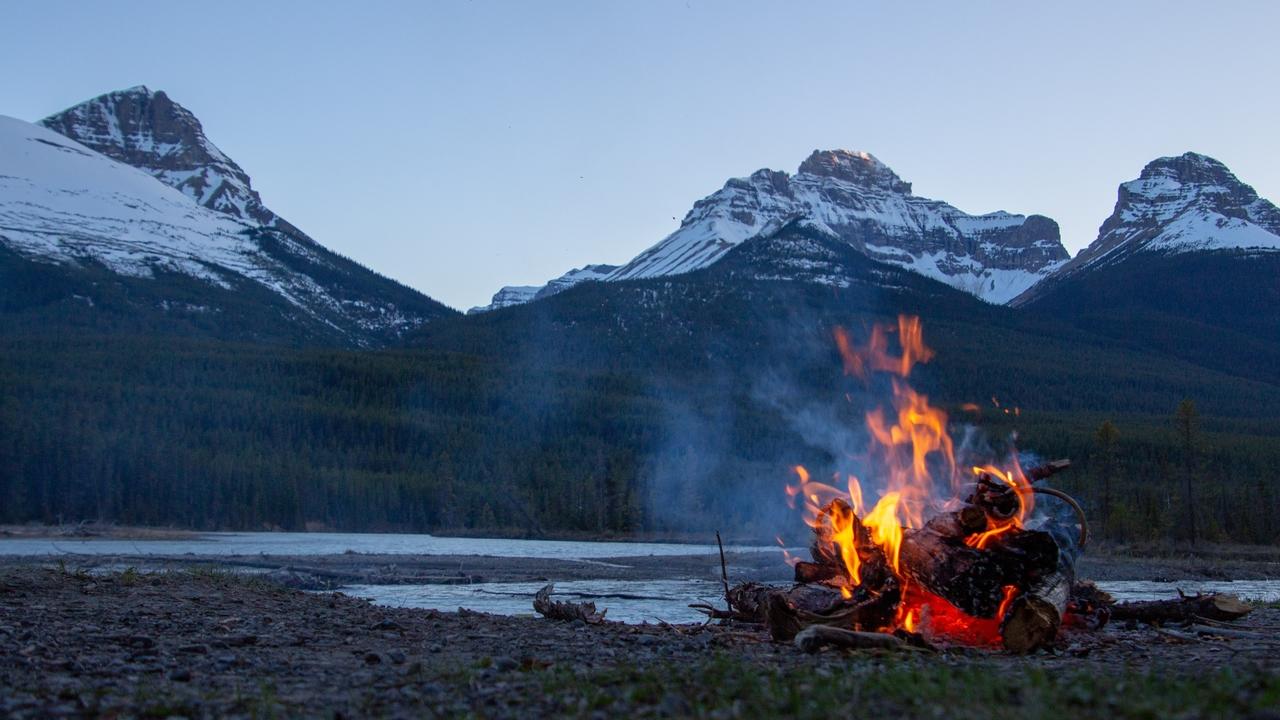Episode 060: Earth Care World Report on Building Fire Resiliency in Mind and Deed
Nov 03, 2020
Welcome back, everyone! We’ve got another World Report this week, focusing on Earth Care. No matter where you’re located in the world, surely you’re aware of the crazy mega-wildfires we’ve been dealing with increasingly for the past years. What the heck!? Is the world just burning up? Well, kind of. This week as we focus on Earth Care, we’re talking about wildfires and what we can do about them to become more resilient mentally and physically. The inspiration for this episode and blog post is coming from Javan K. Bernakevitch’s YouTube video below…
Looking at it All Wrong
When I was a kid growing up in California, Smokey the Bear was everywhere. He was on billboards, on the television, plastered all over campsites, he was a well-known celebrity. Smokey was a marketing campaign by the government to try to convince us to make sure we put out our fires all the way so that we don’t start a wildfire. I’m not saying we shouldn’t be keeping live coals burning in the campfire, but fire isn’t something we should be afraid of or trying to completely suppress.
What happened as a result of this campaign is that people started fearing fire. All of a sudden we’re deforesting the land, having plagues of pests like the pine beetles, and not managing our wildlands. We’ve created a tinder box, which, ironically, is just waiting to catch on fire. In fact, it won’t just catch on fire, it is so primed for extreme combustion, it’s waiting to start a firestorm. We have literally created this problem with our collective mindset and manifested what we were scared of.

Listening to Feedback
In permaculture, we highly value the power of feedback. Listening to nature and seeing the symptoms as well as the root issue is an important step in providing sustainable and regenerative solutions. These crazy wildfires are not the problem, they are the symptoms of a system out of balance. The Native Americans were so involved in the local ecosystem, they worked really hard to create and maintain balance, but as a modern society we’ve not only lost many of those voices, but we’ve become so disconnected from the natural systems around us that we are blind to the imbalances we’re creating until a negative symptom is staring us in the face.
If we dive deeper and really look at the areas that are struggling with these mega-fires, we can notice that it’s an issue with land management. Deforestation, an overgrowing understory, excessive drought, and other neglect are causing these places that so badly need a fire to build up until they literally explode. We need to address the symptom, yes of course, but we will be fighting an uphill battle unless we look past the symptoms and start addressing the root causes for these fires. It would also help if we didn’t live such a flammable life.

Living a Flammable Life
The video addressed the fact that we live a very flammable life, full of things that burn toxic because they’re petroleum-based. This “flammable life concept” can be applied in so many ways. First off, and the most obvious, we can stop surrounding ourselves with these toxic petroleum-based compounds (I’m looking at you, polyester!) in exchange for natural materials that don’t melt and off-gas when exposed to heat. And trust me, these compounds are doing all kinds of bad things other than being terrible when caught on fire, but that’s another conversation.
Second, we can build up a fire-resilient landscape, as David Holmgren and many other permaculture designers have done in the video, by creating systems to keep water on their property, and a proper balance of lively plants to reduce the risk of a devastating fire burning through their land. Things like keyline design, proper understory management, fire-resistant plants, and dense, layered plantings will all help to keep the site thriving and lively, resistant to fire-damage.
Third, we need to build up a fire-resilient mindset. This is two-fold. We should be readjusting our mindset to see fire as just another tool, rather than a weapon or disaster and use what knowledge we can learn from native peoples and traditions to adequately understand fire so that we can better manage it within our own control. But we can also look at this problem as a pattern for what can happen in our mindset. If we’re filling our mind with stress, disorganization, negative dialogue, and limiting beliefs, we’re creating that environment where we have an over-packed dead understory that’s primed to explode. Just as in a food forest, we should manage the understory, manage our thoughts, and clear our debris that is not serving us. We should also be doing controlled burns in our mindset, things like emotional release techniques, empowerment techniques, self-care, and self-discovery to aid in clearing out the negative that can hold us back.
Thanks for checking out this week’s podcast and blog post. Javan, the producer of this video will be on the podcast in December, so stay tuned for that. If you’d like to work on your personal fire resistance within your mindset, you can start by joining the Commons where we’ve got free resources to help you deeply connect with yourself and a community of permies from around the world.
Also, check out this week's Seed of the Week where we're sharing 5 OVERLOOKED ways to make an impact in the permaculture movement :)
Keep Growing!
Previous Episode: Knowing Thyself with Ray Milidoni
